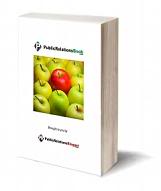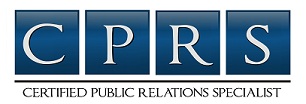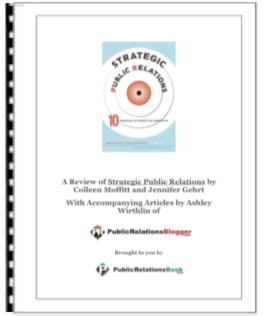________________________________________________________________________
 Part I:
Part I:
Imagine you’re in the breakfast cereal business. You make the best corn flakes. So do you just back a truck-load of them up to every supermarket, then wait for the customers to buy?
Of course not. Because you understand that packaging smartly - the right size boxes, the right look - is integral to selling your product. It’s the same with the key technique to publicity success we’ve been discussing in this column: marketing your knowledge and expertise to the news media for free exposure.
Your knowledge and expertise are just like those corn flakes. Your “box”—what you sell to the media—is your story. Learn how to package, present and deliver your story and you’ll become a publicity success. This month and next, we’ll lay out the ten basic steps to turning your knowledge and expertise into stories that the media can use—giving you free publicity in the bargain.
Remember, everything you know about your profession is what’s going to make the media give you free publicity. If you’re a financial planner, you know how to plan for retirement. You know how to fund a college education….how to buy a house. You know about starting a business. These are things the media, and their audiences, want to know! You just have to slice, dice, and package all this knowledge into boxes of the right size and look, and the media will buy. Here’s how we start:
1) Dissect your knowledge (your corn flakes) into many different stories (your boxes). You figure out how it helps single moms, young couples, retired veterans, the recently laid-off—and you develop a different “box” for each one and sell them to the media separately. In this case, less is more—you maximize your visibility by selling a smaller box to more reporters, more often.
2) Connect the world—and the media’s—to your story. The media—and the reading public—love trends. If you can fit an otherwise dull story into a hot trend—you’ve manufactured publicity gold. That’s why Wheaties puts those flash-in-the-pan Olympic medalists on their cereal boxes—it’s been the same darn Wheaties for 80 years, but they keep it seeming new by making the face on the front of the box the Olympian that everyone’s talking about. Think about how the everyday things you are doing for clients fit into the great story of the day. As I write, the big trend is the sinking stock market. Anything you do that you can conceivably package as story and slap “sinking stock market” on the front is something the media will be interested in.
3) Establish the trend. You don’t have to go along with the media trends—every once in a while, you’ll spot a trend of your own. If you see or hear something you never have before—say, paid leave for people with sick pets—investigate it. Find out what companies are doing it, who’s advocating it, what professional association has accepted it. Find some people who are taking off work to care for Fido. You are like a secret agent for reporters—who are too wrapped up in their next deadline to discover things like this.
4) Assemble the pieces. Bring it all to the reporter—the less work she has to do, the more likely it is that she will use your story. Here’s what you need:
You—your basic bio and your credentials
Your story
The trend, whether new or old, that the story illuminates
Another expert (academic, not a competitor, obviously) or a study
A real life example
Human beings—they will be the conduit for telling the story
5) Reach the media. This is really two steps. First: What publications do you want to be in? A better question is, what audience do you want to be in front of? Would you rather be telling your story to the readers of the local business publication or to the readers of Highlights For Children? The local business publication, of course, and whatever else your potential customers read. Once you target a few publications, read them religiously. Pay special attention to the “bylines”—the names of the reporters writing each story. Soon you will have an idea of what reporter writes about what industry or sector. And when you are ready with your story, you will know who to go to. You’ll be working with a small number of reporters, so you’ll be able to form relationships. And if you prove yourself as a great interview and resource, that reporter will use you as a source her whole career.
Part II:
1) Package your story. Two critical elements will help you do this: Knowledge and Creativity.
When you use your knowledge of the media to package a story, you:
--Know when and how to call the media
--Know what to send (hint—it’s not always a press release)
--Know how individual reporters like to get information
--Think like a reporter
When you use your creativity to package a story, you:
--Devise timely news and angles that get the media’s attention
2) Help the reporter (and help yourself). You will get a reporter’s attention, and keep their affection, when you are helpful to them. When you contact a reporter, always have three talking points and a key objective. If the reporter asks for any information, such as academic studies or government statistics, cheerfully offer to get it for them.
But you don’t want to tell too much. Don’t offer information on a competitor—you may end up squeezing yourself out of the story.
3) Honor the rules and the process. No matter how much help you provide, the story is still the reporter’s, and there are lines in journalism that you as a resource cannot cross:
--If a reporter says they are not interested in your story, don’t press
--Do not be offended if the reporter contacts competitors, or gets an alternate point of view
--Do not ask a reporter if you can read the story (they will be offended)
--Do not repeatedly ask a reporter when your story will be published
4) Hustle to get to a reporter before your competitors. In the crowded business environment, a key to getting publicity is that if you recognize a potential story, drop everything and develop a package for a reporter. Your competitors are probably seeing the same thing you are.
5) Leverage your results. The glow of seeing your name in print need not disappear when the next day’s newspaper comes out. You can use that story over and over again in your marketing and publicity efforts. Print out the article on your letterhead and send copies to your top customers, to your friends and family. Include it in your standard sales kit. You’ve been anointed an expert by the media, and this status will help you grow your business.
Part III:
There are all kinds of smart moves professionals can make to raise their media visibility. Here are ten things not to do if you’re aiming to heighten your public profile.
1. Don’t make the story about you. The media care about, and want to use, your knowledge and expertise. Build your media pieces around the topics that the public, and the media, want to learn more about - not around announcements about the latest award you’ve won.
2. Don’t misunderstand the process. The media will quote and feature you if you can deliver information their audiences need. They have no obligation to use you because you took out an ad, or because you play golf with the publisher.
3. Don’t bite off too much at once. Keep it simple, and focused. Every media piece you send out should be about just one topic. Don’t try to impress them with everything you know, or every possible angle. They can only do one story at a time, and they are deadline-pressured. Subtlety and complexity are usually your enemies.
4. Don’t wander, or help reporters wander. In every interview, walk in knowing by heart your main point or message, and two or three key facts that support it. Make sure you say them, repeat them, and be sure the reporter gets them. Don’t drift all over the topic’s landscape.
5. Don’t hold back. Don’t withhold your “best stuff” for another day, or for paying clients. This is your spotlight, your moment - use it! Share the best of your knowledge with the media - they’ll value you more.
6. Don’t be leisurely. If a reporter calls, return the call promptly - within an hour or two, at most. They’ll find someone else to use if you don’t.
7. Don’t overreach your knowledge. Talk to the media only about what you know best. If it’s outside your core expertise, give it a pass - better yet, steer the reporter to a more appropriate resource. You’ll score big points. Who wants to come across sounding ill-informed?
8. Don’t send the reporter down an unproductive trail. Sure, you want to help a reporter do his or her job better. But that doesn’t mean you have to coax them to interview a direct competitor, or someone else in the field who is likely to oppose or contradict you in print.
9. Don’t try to fool a reporter or hide key facts. They usually find out anyway.
10. Finally, don’t forget who gave you good coverage. Remember and reward reporters who feature you - not with gifts or anything inappropriate, but with kind thank-yous, and frequent suggestions and information for future stories, even if they may not involve you directly. Reporters value information and ease of access to it - deliver that, and you’ll be a media favorite.
-----------------------------------------------------------------------------------
Ned Steele works with people in professional services who want to build their practice and accelerate their growth. The president of Ned Steele's MediaImpact, he is the author of 102 Publicity Tips To Grow a Business or Practice To learn more visit his website.
Article Source.
Tags: tailoring for the media, media and public relations, public relations, PR
|

Tips to Package Your Story for the Media and Public Relations
________________________________________
 Part I:
Part I:Imagine you’re in the breakfast cereal business. You make the best corn flakes. So do you just back a truck-load of them up to every supermarket, then wait for the customers to buy?
Of course not. Because you understand that packaging smartly - the right size boxes, the right look - is integral to selling your product. It’s the same with the key technique to publicity success we’ve been discussing in this column: marketing your knowledge and expertise to the news media for free exposure.
Your knowledge and expertise are just like those corn flakes. Your “box”—what you sell to the media—is your story. Learn how to package, present and deliver your story and you’ll become a publicity success. This month and next, we’ll lay out the ten basic steps to turning your knowledge and expertise into stories that the media can use—giving you free publicity in the bargain.
Remember, everything you know about your profession is what’s going to make the media give you free publicity. If you’re a financial planner, you know how to plan for retirement. You know how to fund a college education….how to buy a house. You know about starting a business. These are things the media, and their audiences, want to know! You just have to slice, dice, and package all this knowledge into boxes of the right size and look, and the media will buy. Here’s how we start:
1) Dissect your knowledge (your corn flakes) into many different stories (your boxes). You figure out how it helps single moms, young couples, retired veterans, the recently laid-off—and you develop a different “box” for each one and sell them to the media separately. In this case, less is more—you maximize your visibility by selling a smaller box to more reporters, more often.
2) Connect the world—and the media’s—to your story. The media—and the reading public—love trends. If you can fit an otherwise dull story into a hot trend—you’ve manufactured publicity gold. That’s why Wheaties puts those flash-in-the-pan Olympic medalists on their cereal boxes—it’s been the same darn Wheaties for 80 years, but they keep it seeming new by making the face on the front of the box the Olympian that everyone’s talking about. Think about how the everyday things you are doing for clients fit into the great story of the day. As I write, the big trend is the sinking stock market. Anything you do that you can conceivably package as story and slap “sinking stock market” on the front is something the media will be interested in.
3) Establish the trend. You don’t have to go along with the media trends—every once in a while, you’ll spot a trend of your own. If you see or hear something you never have before—say, paid leave for people with sick pets—investigate it. Find out what companies are doing it, who’s advocating it, what professional association has accepted it. Find some people who are taking off work to care for Fido. You are like a secret agent for reporters—who are too wrapped up in their next deadline to discover things like this.
4) Assemble the pieces. Bring it all to the reporter—the less work she has to do, the more likely it is that she will use your story. Here’s what you need:
You—your basic bio and your credentials
Your story
The trend, whether new or old, that the story illuminates
Another expert (academic, not a competitor, obviously) or a study
A real life example
Human beings—they will be the conduit for telling the story
5) Reach the media. This is really two steps. First: What publications do you want to be in? A better question is, what audience do you want to be in front of? Would you rather be telling your story to the readers of the local business publication or to the readers of Highlights For Children? The local business publication, of course, and whatever else your potential customers read. Once you target a few publications, read them religiously. Pay special attention to the “bylines”—the names of the reporters writing each story. Soon you will have an idea of what reporter writes about what industry or sector. And when you are ready with your story, you will know who to go to. You’ll be working with a small number of reporters, so you’ll be able to form relationships. And if you prove yourself as a great interview and resource, that reporter will use you as a source her whole career.
Part II:
1) Package your story. Two critical elements will help you do this: Knowledge and Creativity.
When you use your knowledge of the media to package a story, you:
--Know when and how to call the media
--Know what to send (hint—it’s not always a press release)
--Know how individual reporters like to get information
--Think like a reporter
When you use your creativity to package a story, you:
--Devise timely news and angles that get the media’s attention
2) Help the reporter (and help yourself). You will get a reporter’s attention, and keep their affection, when you are helpful to them. When you contact a reporter, always have three talking points and a key objective. If the reporter asks for any information, such as academic studies or government statistics, cheerfully offer to get it for them.
But you don’t want to tell too much. Don’t offer information on a competitor—you may end up squeezing yourself out of the story.
3) Honor the rules and the process. No matter how much help you provide, the story is still the reporter’s, and there are lines in journalism that you as a resource cannot cross:
--If a reporter says they are not interested in your story, don’t press
--Do not be offended if the reporter contacts competitors, or gets an alternate point of view
--Do not ask a reporter if you can read the story (they will be offended)
--Do not repeatedly ask a reporter when your story will be published
4) Hustle to get to a reporter before your competitors. In the crowded business environment, a key to getting publicity is that if you recognize a potential story, drop everything and develop a package for a reporter. Your competitors are probably seeing the same thing you are.
5) Leverage your results. The glow of seeing your name in print need not disappear when the next day’s newspaper comes out. You can use that story over and over again in your marketing and publicity efforts. Print out the article on your letterhead and send copies to your top customers, to your friends and family. Include it in your standard sales kit. You’ve been anointed an expert by the media, and this status will help you grow your business.
Part III:
There are all kinds of smart moves professionals can make to raise their media visibility. Here are ten things not to do if you’re aiming to heighten your public profile.
1. Don’t make the story about you. The media care about, and want to use, your knowledge and expertise. Build your media pieces around the topics that the public, and the media, want to learn more about - not around announcements about the latest award you’ve won.
2. Don’t misunderstand the process. The media will quote and feature you if you can deliver information their audiences need. They have no obligation to use you because you took out an ad, or because you play golf with the publisher.
3. Don’t bite off too much at once. Keep it simple, and focused. Every media piece you send out should be about just one topic. Don’t try to impress them with everything you know, or every possible angle. They can only do one story at a time, and they are deadline-pressured. Subtlety and complexity are usually your enemies.
4. Don’t wander, or help reporters wander. In every interview, walk in knowing by heart your main point or message, and two or three key facts that support it. Make sure you say them, repeat them, and be sure the reporter gets them. Don’t drift all over the topic’s landscape.
5. Don’t hold back. Don’t withhold your “best stuff” for another day, or for paying clients. This is your spotlight, your moment - use it! Share the best of your knowledge with the media - they’ll value you more.
6. Don’t be leisurely. If a reporter calls, return the call promptly - within an hour or two, at most. They’ll find someone else to use if you don’t.
7. Don’t overreach your knowledge. Talk to the media only about what you know best. If it’s outside your core expertise, give it a pass - better yet, steer the reporter to a more appropriate resource. You’ll score big points. Who wants to come across sounding ill-informed?
8. Don’t send the reporter down an unproductive trail. Sure, you want to help a reporter do his or her job better. But that doesn’t mean you have to coax them to interview a direct competitor, or someone else in the field who is likely to oppose or contradict you in print.
9. Don’t try to fool a reporter or hide key facts. They usually find out anyway.
10. Finally, don’t forget who gave you good coverage. Remember and reward reporters who feature you - not with gifts or anything inappropriate, but with kind thank-yous, and frequent suggestions and information for future stories, even if they may not involve you directly. Reporters value information and ease of access to it - deliver that, and you’ll be a media favorite.
Ned Steele works with people in professional services who want to build their practice and accelerate their growth. The president of Ned Steele's MediaImpact, he is the author of 102 Publicity Tips To Grow a Business or Practice To learn more visit his website.
Article Source.
Tags: tailoring for the media, media and public relations, public relations, PR
|
| What did you think? |
Filed Under:
media and public relations,
PR,
public relations,
tailoring for the media
Subscribe to:
Post Comments (Atom)






Comments (0)
Post a Comment